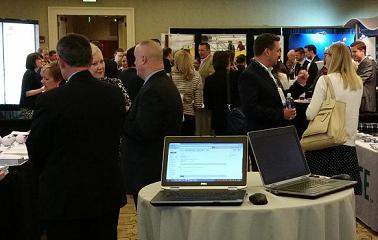Last week, I represented Novaworks at the National Conference of the Society of Corporate Secretaries and Governance Professionals in Boston, Massachusetts. There were over 750 professionals in attendance with many public corporations (ranging from small companies to large accelerated companies) and law firms attending.
Day two of the conference opened with an interview of
Keith Higgins, the Director of the Division of Corporation Finance for the U.S. Securities and Exchange Commission. Mr.
Higgins came to the SEC after 30 years of experience at the law firm of Ropes & Gray LLP where he advised public companies about
securities offerings, mergers and acquisitions,
compliance, and corporate governance, so his insights offer a unique combination of experience on both sides of the
EDGAR compliance realm.

When the
SEC implements rules with which many may not agree (but that must be implemented because of a law from Congress), Mr. Higgins feels consistency is key. There is a greater chance of compliance because rules are easier to adopt within companies when they know exactly what to expect. For example, many companies to date remain confused as to the definition of “
materiality” and what needs to be included in their reports. Mr. Higgins emphasized that the SEC is not only there to implement and enforce rules, but they are there to help companies with
effective disclosure. Companies are reluctant to change their disclosures due to fear of a staff comment, but registrants should know that they can reach out to the SEC if there is a belief that something is not “material” and feel comfortable doing so.
With the discussion of the definition of materiality being a hot topic, a question was asked during the interview regarding the
Conflict Minerals Rule and how the SEC is going to regulate it in the future. Mr. Higgins responded by saying that recently, 1,300 companies filed
Form SD. Staff at the SEC will analyze these filings to see if they can uncover any common errors. The SEC will then generate some initial guidance guidelines for companies, but he does not have a date for when that will occur. I would hope that these guidelines would more clearly address the topic of materiality within the
Conflict Minerals Report.
There are still many questions surrounding the
definition of materiality which stem from the numerous organizations and investors who have a stake in
financial reporting. The Sustainability Accounting Standards Board (SASB) bases materiality on the Supreme Court’s materiality factors and wants companies to disclose materiality on sustainability. Investors want to know more about “risk” as well as issues companies face like cybersecurity. What exactly is material to a report may vary based on who you’re talking to, so it’s not a surprise that the definition of materiality is still a point of concern for companies.
Even though Novaworks provides a solution for the last mile in the
EDGAR filing process, it is good for us to get perspective on the overall amount of work our clients engage in to prepare all SEC documents. We are dedicated to making the last portion of the
filing process as fast and easy as possible to simplify some of the compliance burden.


 When the
When the 
